A brief summary of Chapter 7: MEAN FIELD THEORY OF PHASE TRANSITIONS
Chapter 7
7.4 Mean Field Theory
the Ising model Hamiltonian,
, then we have
neglect the last term on RHS, substitute it in Hamiltonian,
define
which indicates the effective “mean field”.
We find the partition function of the canonical ensemble and the free energy that
adimensionalize the free energy
We know that we have to minimize the free energy at equilibrium under constant volume and constant temperature, so we can get the mean field equation by differentiate
discussion:
(i)
if , one solution . If , three solutions and they are symmetric. It means spontaneous magnetization occurs at the point.
so
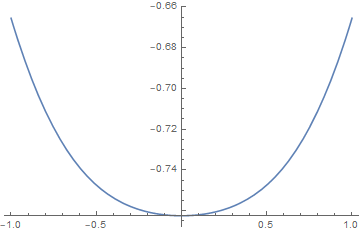
is the mean field transition temperature, and its a second-order transition.
Also we find for ,
the exponent equals 1/2.
now we compute the heat capacity.
when ,
the calculation is not complex.
, we can obtain
(ii)sets and simultaneously, resulting in
, there are three solutions to the mean field equation
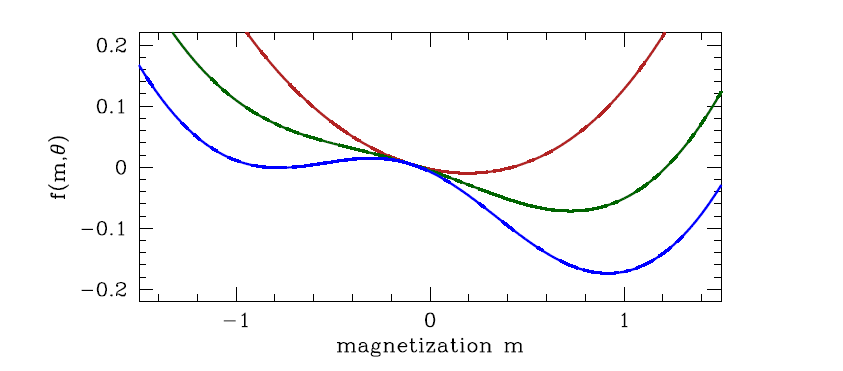
Setting , we obtain
still assumed ,
if we have
and we can obtain the Curie-Weiss law, which shows the critical exponent
if , the solution above becomes a maxima, and the minima is
the critical exponent is also 1.
if ,
In fact, it turns out that the mean field exponents are exact provided d > du, where du is the upper critical dimension of the theory. For the Ising model, du = 4, and above four dimensions (which is of course unphysical) the mean field exponents are in fact exact.
dynamics

7.5 Variational Density Matrix Method
Suppose we are given a Hamiltonian . From this we construct the free energy, :
Let us assume that ̺ is diagonal in the basis of eigenstates of ˆH , i.e.
use it to calculate Ising model
We now write a trial density matrix which is a product over contributions from independent single sites:
where
adopt another notation
so that we can use to evaluate F and S:
and we can obtain the dimensionless free energy per site
We extremize by setting
which is the same as the result of mean field theory. The discussion next is quite the same. In 7.10 we will see the equivalence of the two methods.
7.6 Landau Theory of Phase Transitions
based on expansion of the free energy of a thermodynamic system in terms of an order parameter
(1) quartic free energy
(i) h=0
symmetric
unique temperature θc where a(θc) = 0
二阶相变点,比热突变
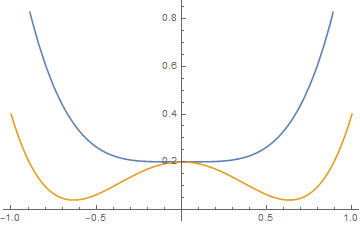
(ii)h≠0
asymmetric
as well as we can obtain
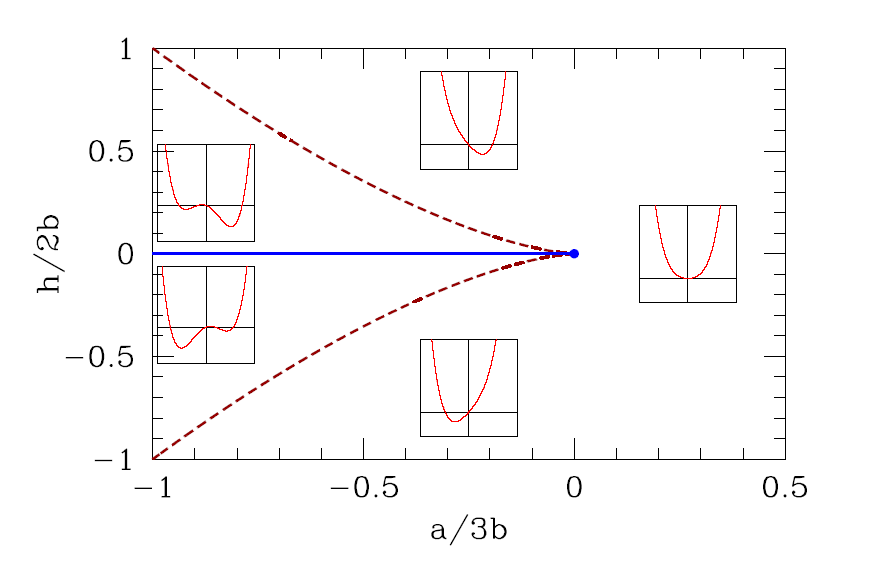
, then there will be three real solutions to the mean field equation , one of which is a global minimum (the one for which ).
For one minima disappear and there is only a single global minimum
一阶相变
(2) cubic terms
we can obtain
thus denotes a line of first order transitions
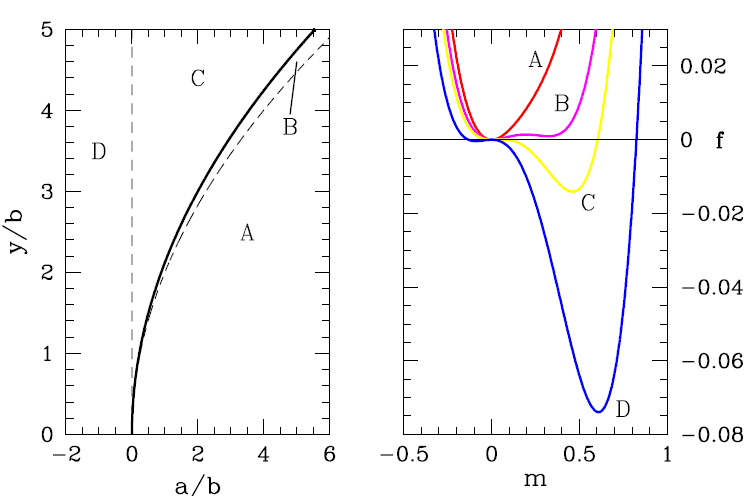
if we impose some dynamics on the system, adimensionalize the free energy


(3)Sixth order Landau theory : tricritical point
(i),
(ii), One of the solutions is . The other two are
(iii)
The point (a, b) = (0, 0), which lies at the confluence of a first order line and a second order line, is known as a tricritical point.
dynamics

7.11.3 Canted quantum antiferromagnet
Consider the following model for quantum spins:
we include a parameter α which describes the canting angle that the spins on these sublattices make with respect to the ˆx-axis.
so the variational density matrix of each site is
Finally, the eigenvalues of are still , hence
the calculation is similar to the 7.5, we can obtain the free energy and adimensionalize it
in it,
similarly to find its minima, we have
and we can obtain
discussion:
(i), , , so A and B have no difference in angles. The solution is the same as discussed above.
(ii), we have canting with an angle
, and the boundary is
(iii)
through this equation we can obtain m.

